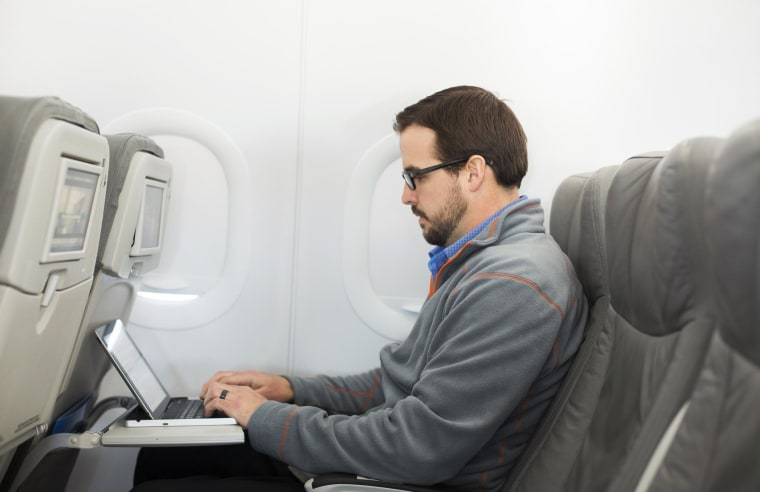With satellite-based Wi-Fi, Internet speeds on jetliners are getting lightning fast. And airlines are finding that travelers expect connections in the air to rival those on the ground — and at lower cost.
But the fast evolution of rival systems and standards, such as Ku band and Ka band, pose a big question for airlines: Which one to choose?
Equipping fleets can cost hundreds of millions of dollars, and airlines don't want to see their investment quickly become outdated due to newer technology. That's made some cautious about signing up.
"We don't want to end up with a Betamax," said Peter Ingram, chief financial officer of Hawaiian Airlines, referring to the Sony video format that eventually lost out to the VHS standard, leaving many consumers with obsolete systems.

The U.S. market for airborne Internet got a big boost last November after the U.S. Federal Aviation Administration allowed passengers to use smartphones, tablets and e-readers throughout a flight, ending a long-standing ban on their use during takeoff and landing.
While the change hasn't been adopted worldwide, the FAA's move is expected to lead to greater use of devices, and bandwidth, on planes.
About 40 percent of U.S. jetliners already have some Wi-Fi, but the race is on to wire the rest of a growing global fleet, and to make the existing connections better.
The number of commercial planes worldwide with Wi-Fi, cell service or both is expected to more than triple over the next 10 years, to 14,000 from about 4,000 currently, with much of that growth in Asia, according to research firm IHS.
Much of the U.S. fleet will need upgrades to access satellites, since many planes currently are equipped for ground-based transmission, which is typically slower than satellite.
"Passengers of the future want to be connected when they want," Chris Emerson, senior vice president of marketing at Airbus, told Reuters during the Aircraft Interiors Expo in Hamburg.
"Everyone wants Internet the way they have it on the ground, so it has to be cheap or free."